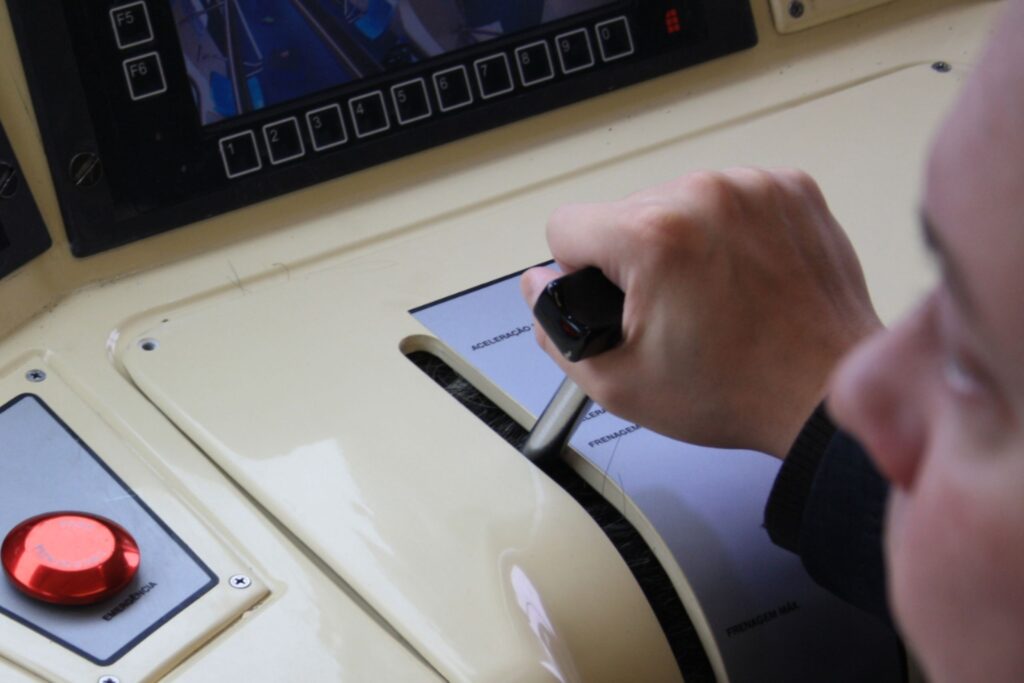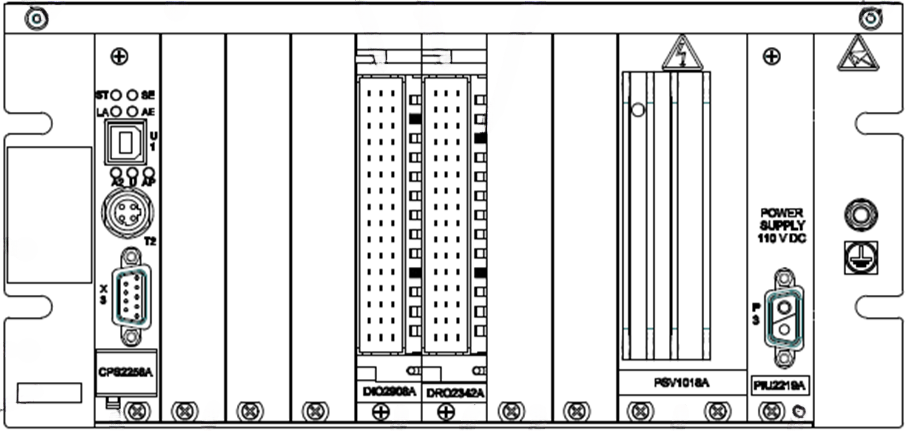VCS: Vigilance Control System
The SIL 2 Vigilance Control System, also known as the dead man’s switch or driver safety device, continuously monitors the train driver’s vigilance for enhanced passenger and train safety.


Build your Vigilance Control System from the following modules
The Vigilance Control System usually consists of a Central Processing Unit (CPU), I/O modules, a power supply and a rack. Click on an image to explore related content.
Modular Concept
The modules below are the minimum required for a Vigilance Control System, with additional modules available for expanded functionality, if required. Hover over each area to view a brief description or click to access the full module page.

CPU with Serial Links (CPS)
A central processing unit providing serial communication interfaces.
Digital Input Output Module (DIO)
Receives digital signals through its input channels and delivers them to the train computer's central processing unit (CPU) module for processing.
Digital Relay Output Module (DRO)
Receives commands from the train computer's Central Processing Unit (CPU) module and controls the output relays accordingly.
Power Supply Unit for VME (PSV)
Provides power for the system.
Power Input Unit (PIU)
Used to pass train battery voltage to the EKE-Trainnet® Power Supply Unit for VME (PSV) module
Application Software
The Vigilance Control System application software is built on an open-source Linux platform and is coded in C and C++.
Unlike our TCMS platform, which allows users to code their own applications, the Vigilance Control System application software is built by EKE-Electronics. This protects the SIL 2 certification, which requires tools, processes and knowledge about how to produce SIL Safety applications.
How does the Vigilance Control System work?
The VCS activates upon the train driver signalling their vigilance by engaging a pedal or dedicated button. Other actions can also be monitored based on your needs.
A predefined schedule, denoted as T1, T2, and T3, dictates the intervals at which the driver must signal their vigilance and specifies the subsequent actions if there is no response.
- System activated: The system is activated when the train is operating above 10 km/h.
- Vigilance notification: The driver must perform an action.
- Alarm light: If there is no activity after T1, the alarm light blinks.
- Alarm bell: If there is no response within T2, the alarm bell rings.
- Emergency brake: If no response within T3, the emergency brake is applied. Automatic braking also engages if the Vigilance Control System loses power.
Vigilance Control System Customisations
The Vigilance Control System is designed to enhance train and passenger safety by checking the train driver’s vigilance at all times. It can be easily customised, should you need different alarms or a modified setup.
Adjustable interval timings enhance both safety and flexibility. Customising these intervals allows operators to align vigilance checks with specific operational needs, reducing false alarms and unnecessary interventions. This adaptability ensures optimal responsiveness to varying conditions, improving efficiency, and minimising disruptions while maintaining high safety standards for passengers and crew.
By adjusting alarm levels, operators can set alert thresholds to match specific operational needs and environmental conditions, ensuring timely and relevant notifications. This customisation minimises unnecessary alarms, reducing distractions for the driver and allowing for better focus on critical tasks. Ultimately, this flexibility results in a more efficient and responsive safety system, contributing to improved overall safety and reliability for passengers and train operations.
This feature allows operators to tailor the system’s activation criteria to suit specific operating conditions, ensuring that vigilance checks are only triggered when the train is operating above a certain speed threshold. By customising the minimum speed threshold, operators can minimise unnecessary activations during low-speed manoeuvres, reducing the likelihood of false alarms and driver distractions.
The Vigilance Control System can be used standalone or as part of a more comprehensive EKE-Trainnet® system.
The modularity of the system allows you to add as many input and output channels as you wish, by simply adding new modules and/or choosing a larger rack. It can also store the status of vigilance, events and signals, acting as an event recorder. Messages can also be sent to the wayside if the train is equipped with the appropriate system.
Why Choose EKE-Electronics for your Vigilance Control System?
EKE’s Vigilance Control System extends beyond basic monitoring capability, offering a range of customisable features and the flexibility to meet your specific needs.

The normal operation of the VCS is that the driver presses onto a pedal or a dedicated momentary push button. However, the Vigilance Control System can monitor other actions, ensuring thorough vigilance and adaptability based on your specific needs.

The modularity of the system allows you to add as many input and output channels as you wish, by simply adding new modules and/or choosing a larger rack. With additional input/output channels, it seamlessly integrates with your existing infrastructure, providing enhanced functionality.

The VCS can also function as a reliable event recorder, capturing critical information about the sequence of events leading up to any operational incidents or emergencies. This capability allows for detailed retrospective analysis, enabling operators to review and understand the circumstances surrounding specific events.




